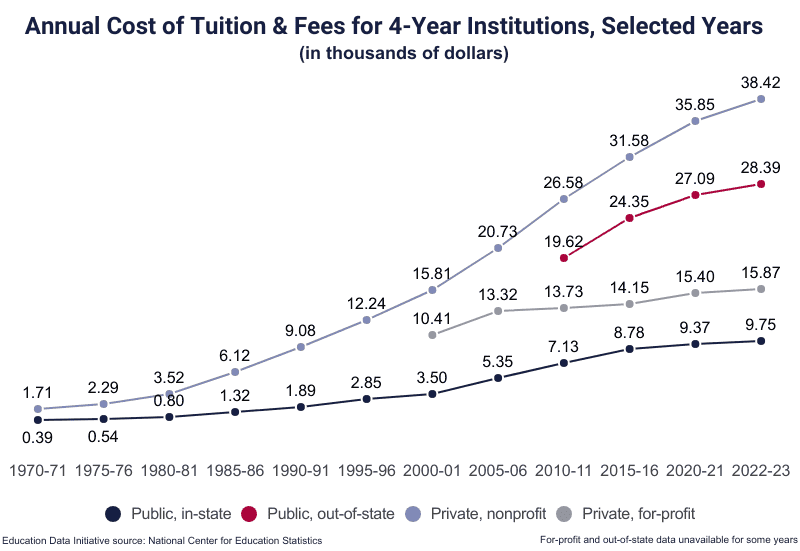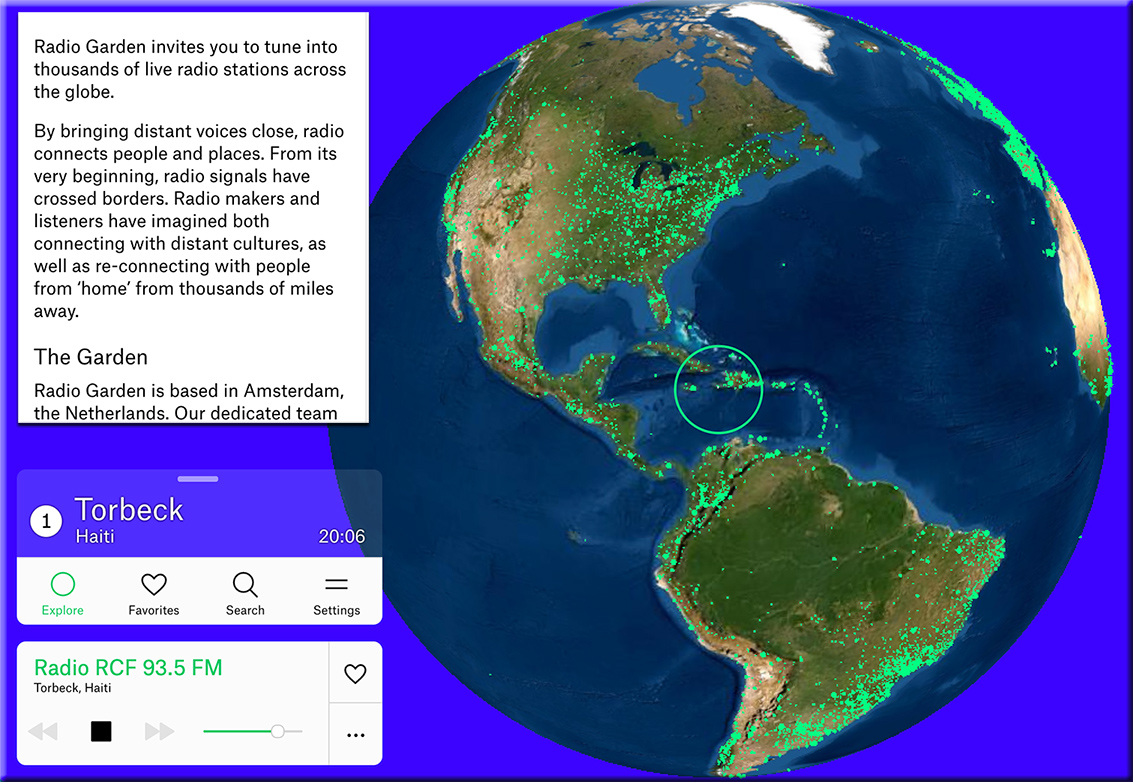Last updated on 5/5/25
A powerful, global, Artificial Intelligence (AI)-based, next-generation, lifelong learning platform -- meant to help people reinvent themselves quickly, safely, cost-effectively, conveniently, and consistently. And speaking of people, this new platform will require -- and will rely upon -- human beings to create it as well as to drive its effectiveness.
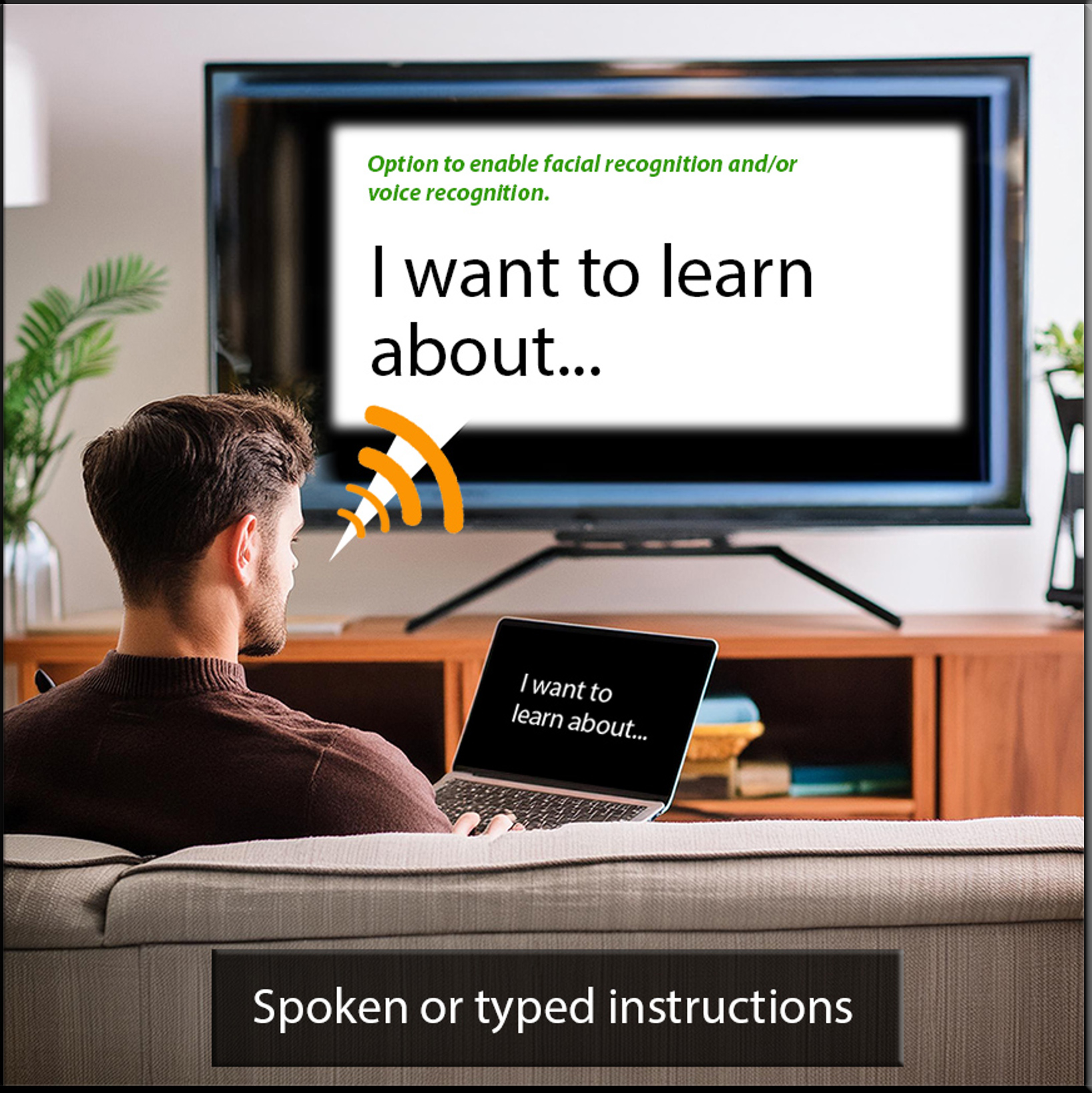
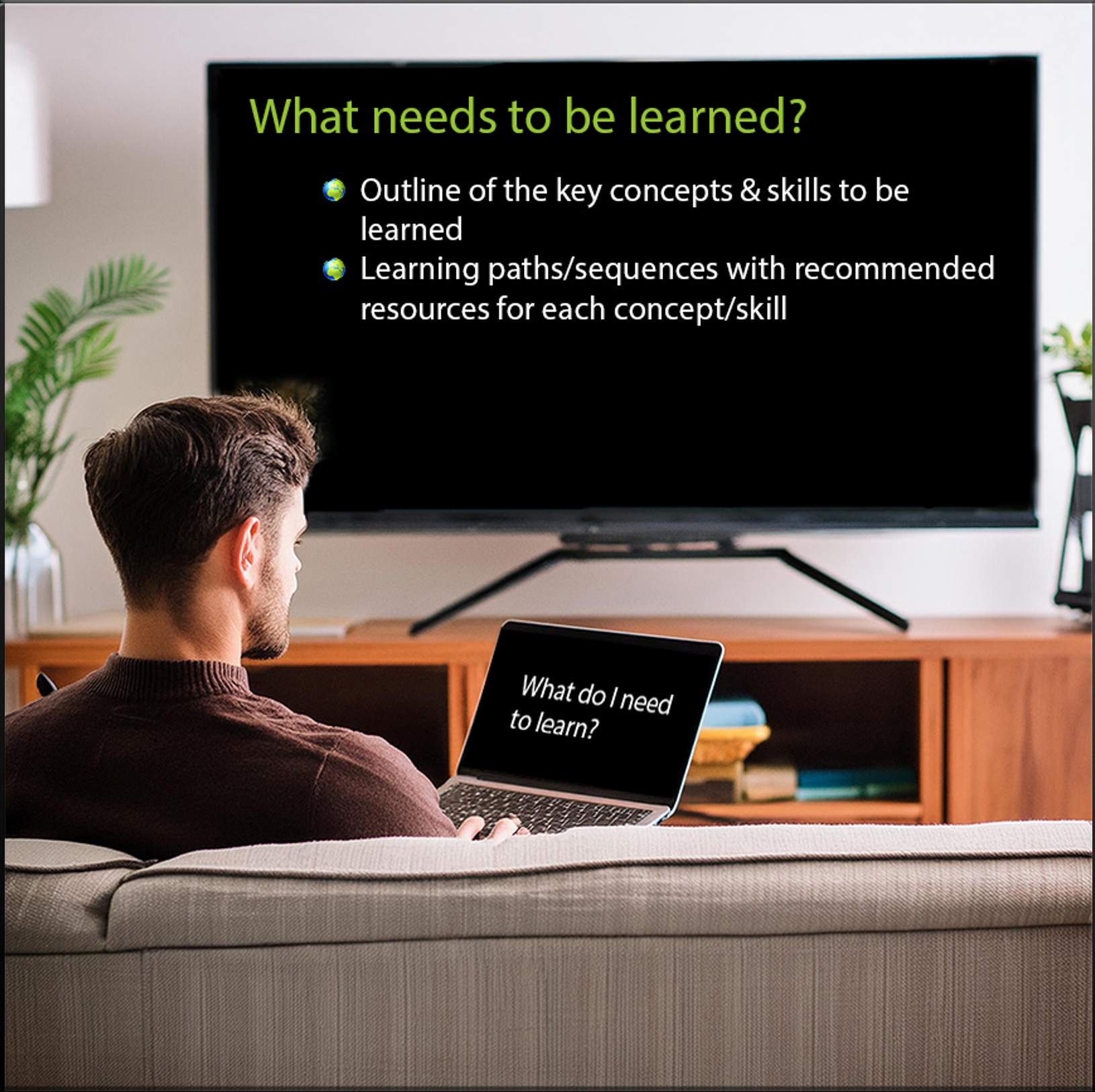
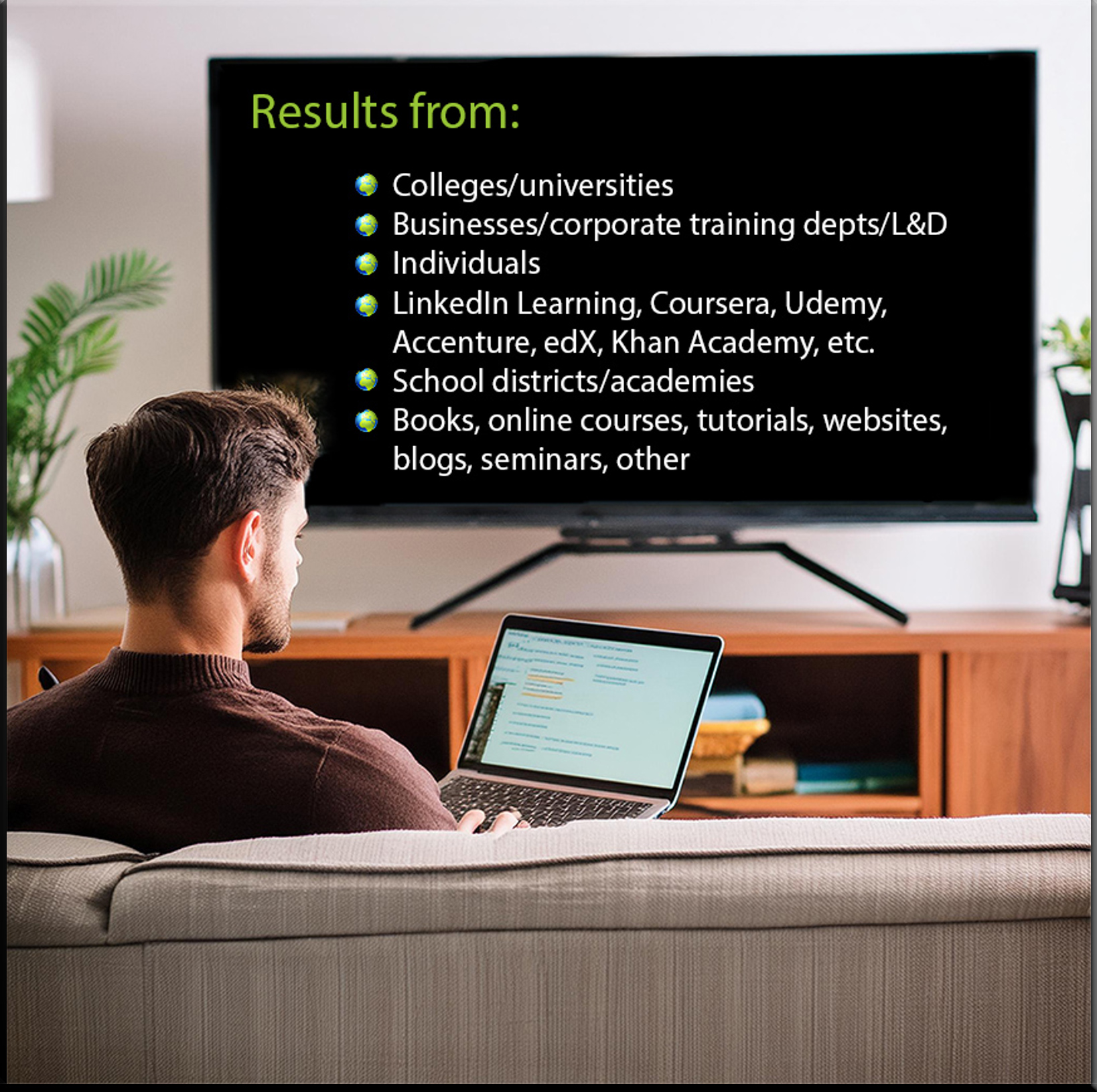
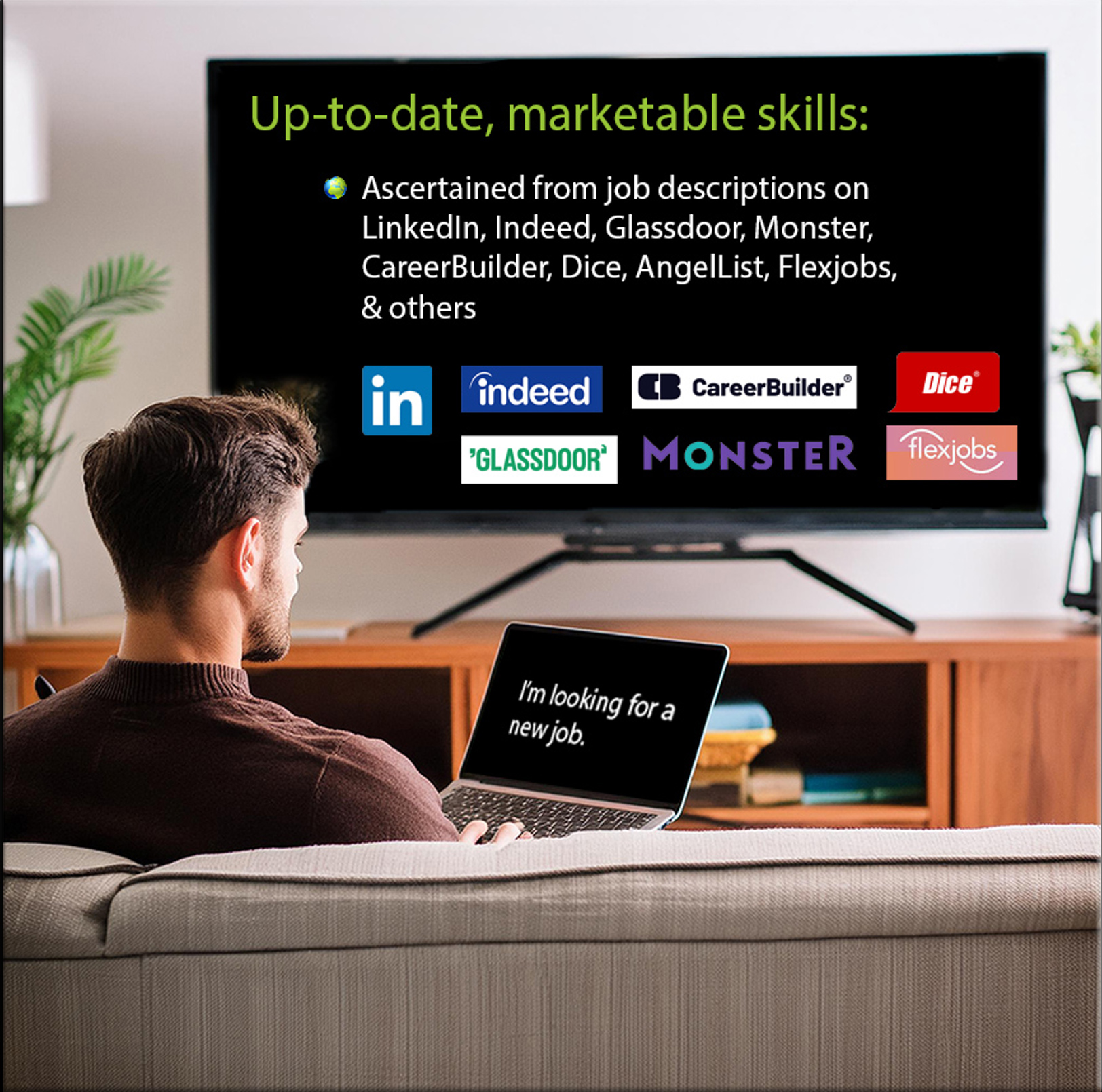

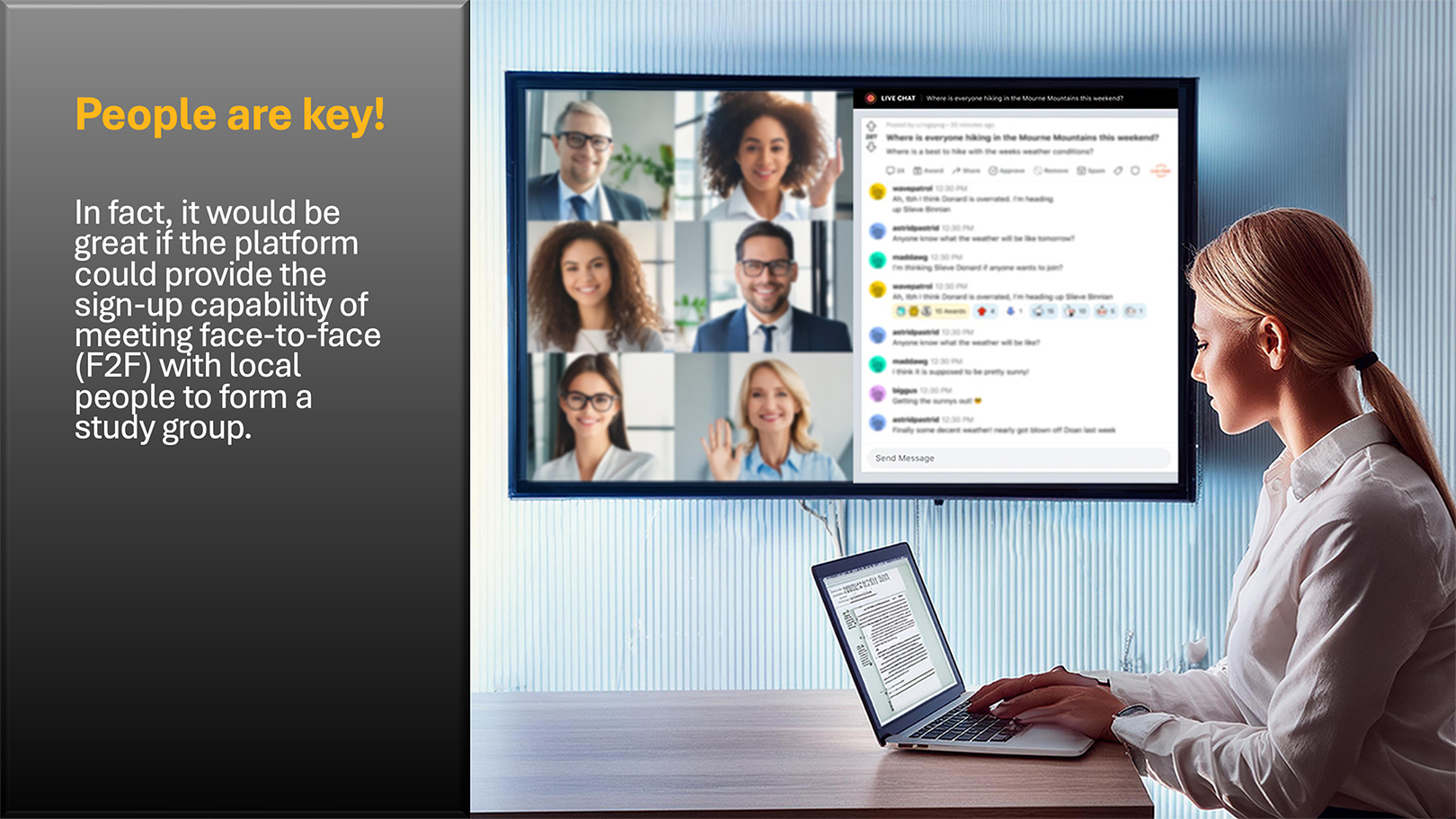
In the future, the lifelong ownership of the learning-related records and credentials will belong to the individual learners themselves. They will be the ones who control who else can access these records.
The learners profiles will be stocked by traditional institutions of higher education, corporate training/L&D groups, vendors like LinkedIn Learning, as well as by MOOCs, bootcamps, industry experts, apprenticeships/internships, and others.
Some recent items/quotes/ideas to consider:
From George Siemens "SAIL: Transmutation, Assessment, Robots e-newsletter on 5/2/25
All indications are that AI, even if it stops advancing, has the capacity to dramatically change knowledge work. Knowing things matters less than being able to navigate and make sense of complex environments. Put another way, sensemaking, meaningmaking, and wayfinding (with their yet to be defined subelements) will be the foundation for being knowledgeable going forward.
That will require being able to personalize learning to each individual learner so that who they are (not what our content is) forms the pedagogical entry point to learning. (DSC: And I would add WHAT THEY WANT to ACHIEVE.) LLMs are particularly good and transmutation. Want to explain AI to a farmer? A sentence or two in a system prompt achieves that. Know that a learner has ADHD? A few small prompt changes and it’s reflected in the way the LLM engages with learning. Talk like a pirate. Speak in the language of Shakespeare. Language changes. All a matter of a small meta comment send to the LLM. I’m convinced that this capability to change, transmute, information will become a central part of how LLMS and AI are adopted in education.
...
Speaking of Duolingo - it took them 12 years to develop 100 courses. In the last year, they developed an additional 148. AI is an accelerant with an impact in education that is hard to overstate. “Instead of taking years to build a single course with humans the company now builds a base course and uses AI to quickly customize it for dozens of different languages.”
The future of career navigation — from medium.com by Sami Tatar
1. Career navigation market overview
Key takeaway:
Career navigation has remained largely unchanged for decades, relying on personal networks and static job boards. The advent of AI is changing this, offering personalised career pathways, better job matching, democratised job application support, democratised access to career advice/coaching, and tailored skill development to help you get to where you need to be. Hundreds of millions of people start new jobs every year, this transformation opens up a multi-billion dollar opportunity for innovation in the global career navigation market.
…
A.4 How will AI disrupt this segment?
Personalised recommendations: AI can consume a vast amount of information (skills, education, career history, even youtube history, and x/twitter feeds), standardise this data at scale, and then use data models to match candidate characteristics to relevant careers and jobs. In theory, solutions could then go layers deeper, helping you position yourself for those future roles. Currently based in Amsterdam, and working in Strategy at Uber and want to work in a Product role in the future? Here are X,Y,Z specific things YOU can do in your role today to align yourself perfectly. E.g. find opportunities to manage cross functional projects in your current remit, reach out to Joe Bloggs also at Uber in Amsterdam who did Strategy and moved to Product, etc.
Nearly half of Gen Z and millennials say college was a waste of money—AI has already made degrees obsolete — from fortune.com by Preston Fore
College is often advertised as the best four years of one’s life, but many Americans now have regrets.
More than a third of all graduates now say their degree was a “waste of money,” according to a new survey by Indeed. This frustration is especially pronounced among Gen Z, with 51% expressing remorse—compared to 41% of millennials and just 20% of baby boomers.
Overall, a growing share of college-educated workers are questioning the return on investment (ROI) of their degree, Kyle M.K., a career trend expert at Indeed, told Fortune. It’s something that’s not all too surprising considering that the average cost of a bachelor’s degree has doubled in the last two decades to over $38,000, and total student loan debt has ballooned to nearly $2 trillion.
“Another 38% feel student loans have limited their career growth more than their diploma has accelerated it,” M.K. said.
“AI won’t invalidate a solid education,
but it will reward those who keep upgrading their toolkit.”
Average Cost of College & Tuition — from educationdata.org
Last Updated: March 8, 2025
Report Highlights. The average cost of college* in the United States is $38,270 per student per year, including books, supplies, and daily living expenses.
- The average cost of college has more than doubled in the 21st century; the compound annual growth rate (CAGR) of tuition is 4.04%.
- The average in-state student attending a public 4-year institution and living on-campus spends $27,146 for one academic year.
- The average cost of in-state tuition alone is $9,750; out-of-state tuition averages $28,386.
- The average private, nonprofit university student spends $58,628 per academic year living on campus, $38,421 of it on tuition and fees.
- Considering student loan interest and loss of income, investing in a bachelor’s degree can ultimately cost in excess of $500,000.
From DSC:
Reminds me of a graphic that Yohan Na and I created back in 2009:

Micro-Credentials Impact Report — from coursera.org
Get exclusive insights on how industry-aligned micro- credentials are bridging skill gaps, driving career outcomes, and building a future-ready workforce—with data from 2,000+ students and employers across six regions.
See how micro-credentials are driving student success, meeting industry demand, and transforming higher education institutions. Deliver industry-aligned learning with confidence—whether you’re leading a university or designing workforce development programs.
…
Our data shows that 90% of employers are willing to offer higher starting salaries to those with micro-credentials. Most offer 10–15% more for credit-bearing vs. non-credit credentials—even higher for GenAI. Help your graduates earn more by integrating micro-credentials into your programs.
…
Students are 2x as likely to choose programs with micro-credentials—even more if credentials are credit-bearing, the report finds. Higher education leaders echo this trend, with 7 in 10 saying students are more likely to enroll in programs that offer micro-credentials for academic credit.
DeepSeek unveils Prover V2: An open-source math powerhouse-- from theaivalley.com
DeepSeek has quietly launched Prover V2, an open-source model built to solve math problems using Lean 4 assistant, which ensures every step of a proof is rigorously verified.
What's impressive about it?
- Massive scale: Based on DeepSeek-V3 with 671B parameters using a mixture-of-experts (MoE) architecture, which activates only parts of the model at a time to reduce compute costs.
- Theorem solving: Uses long context windows (32K+ tokens) to generate detailed, step-by-step formal proofs for a wide range of math problems — from basic algebra to advanced calculus theorems.
- Research grade: Assists mathematicians in testing new theorems automatically and helps students understand formal logic by generating both Lean 4 code and readable explanations.
- New benchmark: Introduces ProverBench, a new 325-question benchmark set featuring problems from recent AIME exams and curated academic sources to evaluate mathematical reasoning.
Another ‘shock’ is coming for American jobs -- from washingtonpost.com by Heather Long
Millions of workers will need to shift careers. Our country is unprepared.
The United States is on the cusp of a massive economic shift due to AI, and it’s likely to cause greater change than anything President Donald Trump does in his second term. Much good can come from AI, but the country is unprepared to grapple with the need for millions — or perhaps tens of millions — of workers to shift jobs and entire careers.
“There’s a massive risk that entry-level, white-collar work could get automated. What does that do to career ladders?” asked Molly Kinder, a fellow at the Brookings Institution. Her research has found the jobs of marketing analysts are five times as likely to be replaced as those of marketing managers, and sales representative jobs are three times as likely to be replaced as those of sales managers.
Young people working in these jobs will need to be retrained, but it will be hard for them to invest in new career paths. Consider that many college graduates already carry a lot of debt (an average of about $30,000 for those who took student loans). What’s more, the U.S. unemployment insurance system covers only about 57 percent of unemployed workers and replaces only a modest amount of someone’s pay.
How People Are Really Using Gen AI in 2025 — from hbr.org by Marc Zao-Sanders
DSC: NOTE the place of Enhanced learning in the graphic below.
A multi-year history of how we got here
(i.e., relevant postings/pieces of the puzzle) >>
What does the vision entail?
- A new, global, collaborative learning platform that offers more choice, more control to learners of all ages – 24x7 – and could become the organization that futurist Thomas Frey discusses here with Business Insider:
- A learner-centered platform that is enabled by – and reliant upon – human beings but is backed up by a powerful suite of technologies that work together in order to help people reinvent themselves quickly, conveniently, and extremely cost-effectively
- A customizable learning environment that will offer up-to-date streams of regularly curated content (i.e., microlearning) as well as engaging learning experiences
- Along these lines, a lifelong learner can opt to receive an RSS feed on a particular topic until they master that concept; periodic quizzes (i.e., spaced repetition) determine that mastery. Once mastered, the system will ask the learner as to whether they still want to receive that particular stream of content or not.
- A Netflix-like interface to peruse and select plugins to extend the functionality of the core product
- An AI-backed system of analyzing employment trends and opportunities will highlight those courses and “streams of content” that will help someone obtain the most in-demand skills
- A system that tracks learning and, via Blockchain-based technologies, feeds all completed learning modules/courses into learners’ web-based learner profiles
- A learning platform that provides customized, personalized recommendation lists – based upon the learner’s goals
- A platform that delivers customized, personalized learning within a self-directed course (meant for those content creators who want to deliver more sophisticated courses/modules while moving people through the relevant Zones of Proximal Development)
- Notifications and/or inspirational quotes will be available upon request to help provide motivation, encouragement, and accountability – helping learners establish habits of continual, lifelong-based learning
- An online-based marketplace, matching learners with resources
"I've been predicting that by 2030 the largest company on the internet is going to be an education-based company that we haven't heard of yet," Frey, the senior futurist at the DaVinci Institute think tank, tells Business Insider.
Ideally, the learner is using two displays simultaneously:
While basic courses will be accessible via mobile devices, the optimal learning experience will leverage two or more displays/devices. So while smaller smartphones, laptops, and/or desktop workstations will be used to communicate synchronously or asynchronously with other learners, the larger displays will deliver an excellent learning environment for times when there is:
- A Subject Matter Expert (SME) giving a talk or making a presentation on any given topic
- A need to display multiple things going on at once, such as:
- The SME(s)
- An application or multiple applications that the SME(s) are using
- Content/resources that learners are submitting in real-time (think Bluescape, T1V, Prysm, other)
- The ability to annotate on top of the application(s) and point to things w/in the app(s)
- Media being used to support the presentation such as pictures, graphics, graphs, videos, simulations, animations, audio, links to other resources, GPS coordinates for an app such as Google Earth, other
- Other attendees (think Google Hangouts, Skype, Polycom, or other videoconferencing tools)
- An (optional) representation of the Personal Assistant (such as today’s Alexa, Siri, Google Assistant, etc.) that’s being employed via the use of Artificial Intelligence (AI)
This new learning platform will also feature:
- Voice-based commands to drive the system (via Natural Language Processing (NLP))
- Language translation (using techs similar to what’s being used in Translate One2One, an earpiece powered by IBM Watson)
- Speech-to-text capabilities to provide real-time closed captioning and transcriptions -- as well as for use w/ chatbots, messaging, inserting discussion board postings
- Text-to-speech capabilities as an assistive technology and also for everyone to be able to be mobile while listening to what’s been typed
- Chatbots
- For learning how to use the system
- For asking questions of – and addressing any issues with – the organization owning the system (credentials, payments, obtaining technical support, etc.)
- For asking questions within a course to obtain information -- such as asking questions of a historical figure
- As many profiles as needed per household
- Similar to asking questions of a chatbot, we will be able to use holographic storytelling where learners can ask questions of a hologram (examples here and here)
- The ability to use the learner's webcam to take pictures of equations in order to get instant feedback and/or links to other resources
- Polling
- (Optional) Machine-to-machine-based communications to automatically launch the correct profile when the system is initiated (from one’s smartphone, laptop, workstation, and/or tablet to a receiver for the system)
- (Optional) Voice recognition to efficiently launch the desired profile
- (Optional) Facial recognition to efficiently launch the desired profile
- (Optional) Upon system launch, to immediately return to where the learner previously left off
- The capability of the webcam to recognize objects and bring up relevant resources for that object
- A built in RSS feed aggregator – or a similar technology – to enable learners to tap into the relevant “streams of content” that are constantly flowing by them
- Social media dashboards/portals – providing quick access to multiple sources of content and whereby learners can contribute their own “streams of content”
- A twist on the flipped classroom approach, whereby students can check out videos of equations, problems, etc. and put in their "markers" with accompanying comments throughout the videos, alerting the SMEs where they have questions, comments, and/or issues
In the future, new forms of Human Computer Interaction (HCI) such as Augmented Reality (AR), Virtual Reality (VR), and Mixed Reality (MR) will be integrated into this new learning environment – providing entirely new means of collaborating with one another.
Consider the items below:
In the future, we won't just be able to find movies or shows, but rather, we will also be
able to quickly locate up-to-date, relevant learning-related content and participate in highly-practical, learning-related experiences.
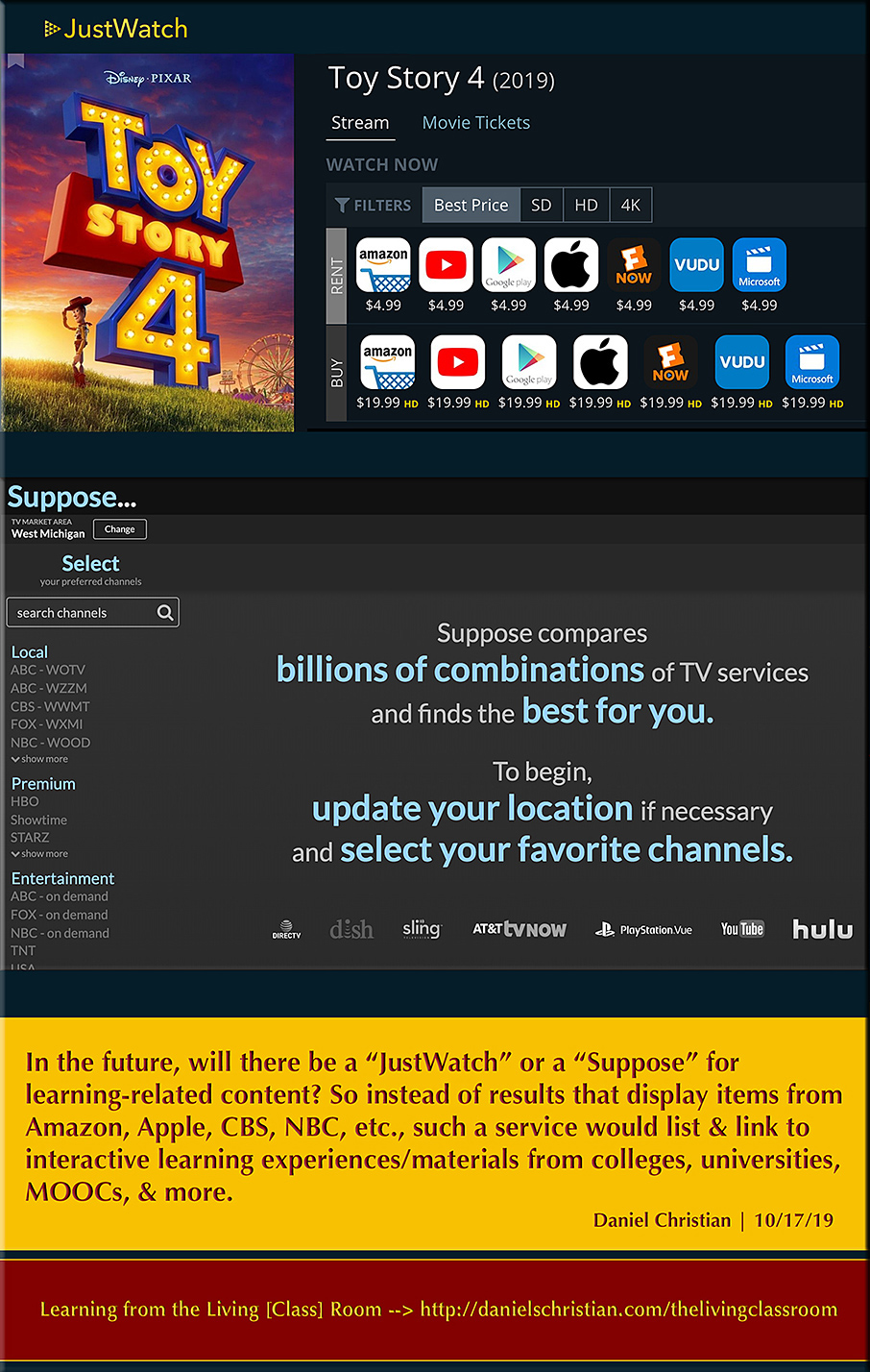
And check out what they are doing now with radio stations! So...what can be done with learning-related streams of content?!
Consider the type of service/value being offered in the graphic below...and that such a service will be constantly available on a next-gen learning platform. That is, the system will:
- Scan open job descriptions
- Present a constantly-updated list of the top/"hottest" skills and occupations
- Offer the relevant courses, modules, webinars, local learning hubs, discussion forums, etc. that will teach you the necessary skills to land those jobs (similar to what is shown in the above grapic involving justwatch.com or suppose.tv and what those vendors are providing for the entertainment industry).
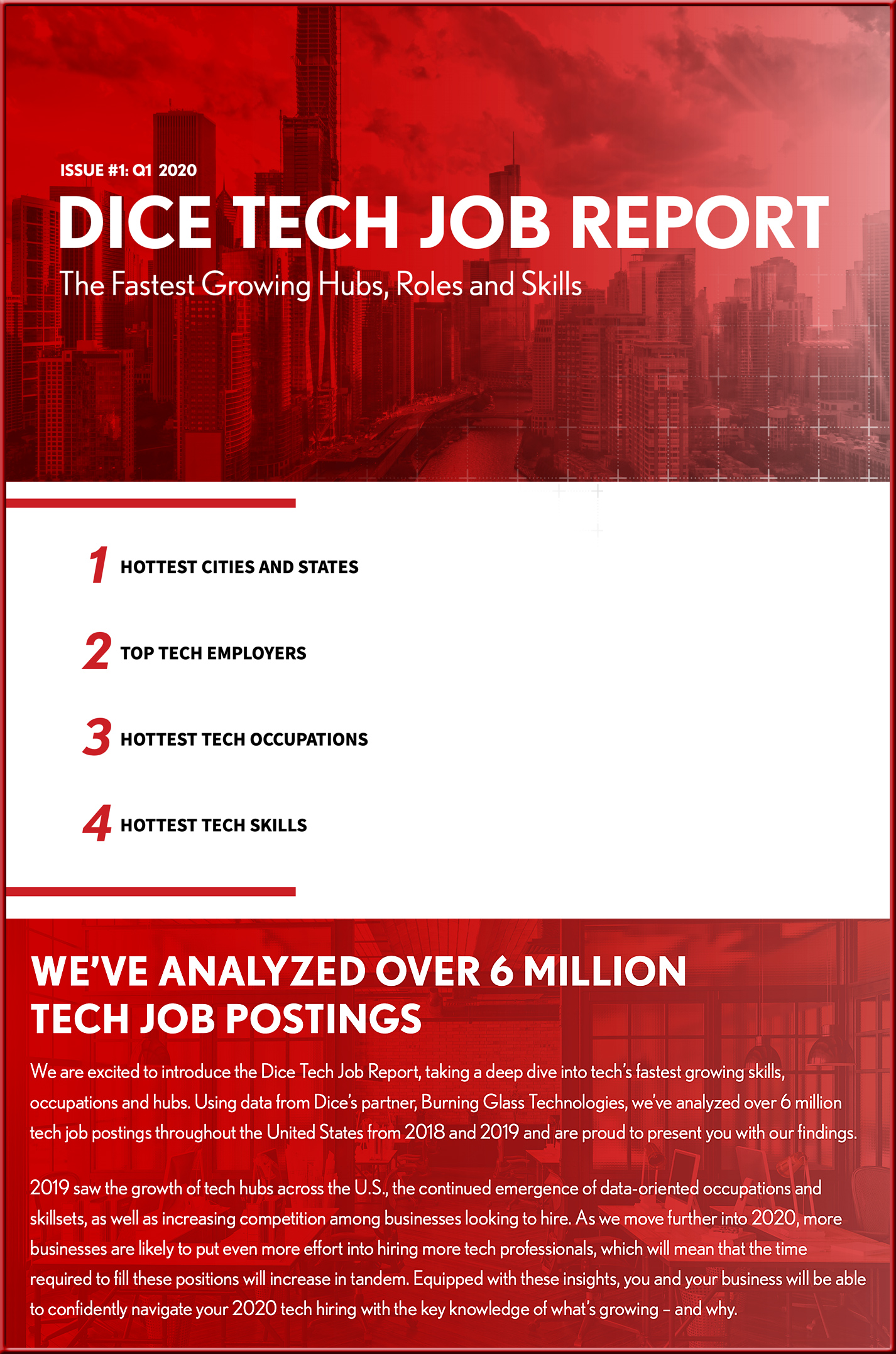
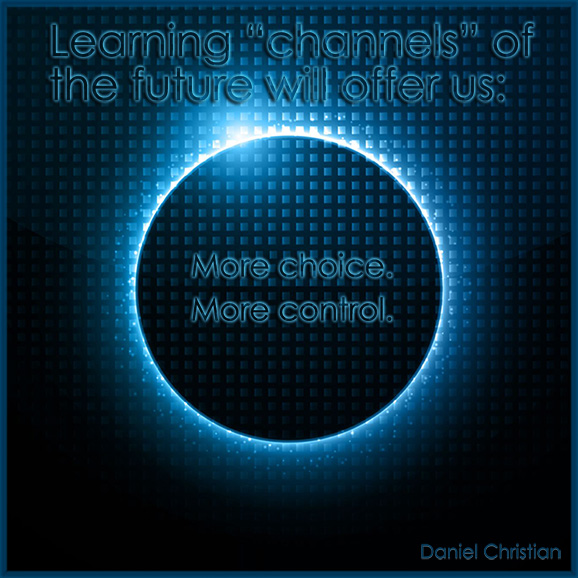
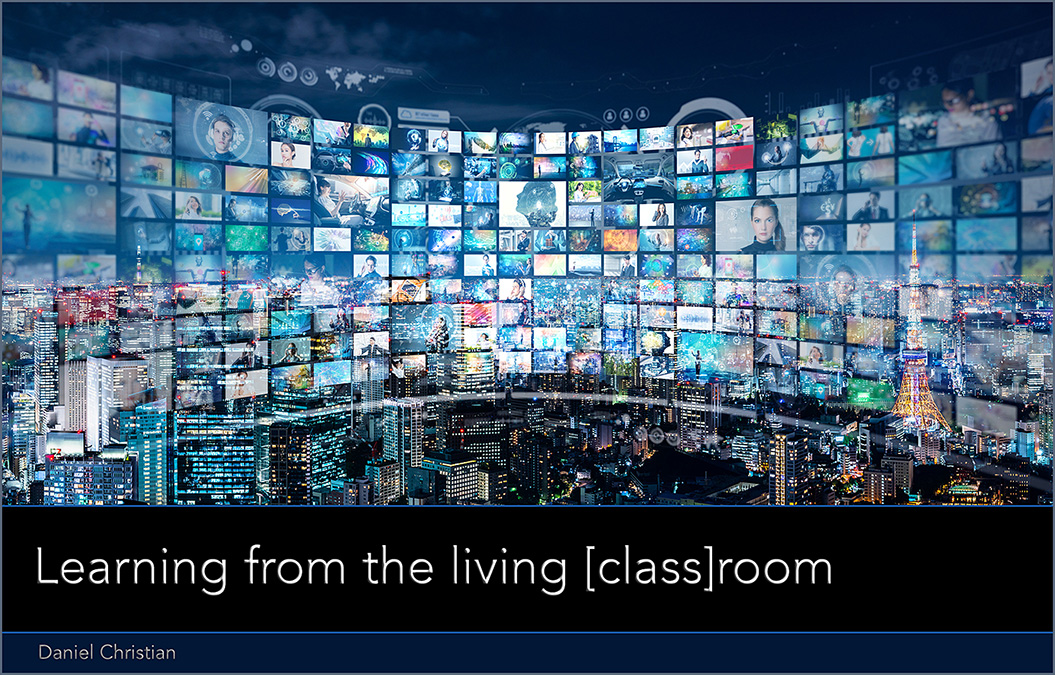
© 2025 | Daniel Christian
However, this vision/idea goes back much further than the date listed on the
graphic below -- and the pieces continue to come together!
![Learning from The Living [Class] Room](images/The-Living-Class-Room-Daniel-S-Christian-July-2012.jpg)

